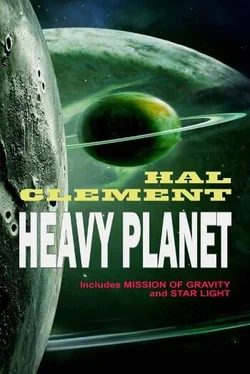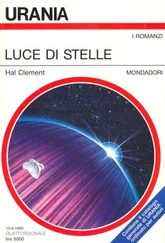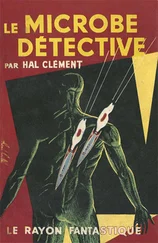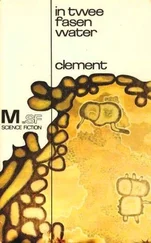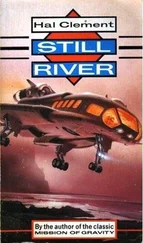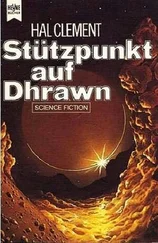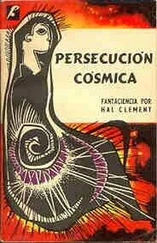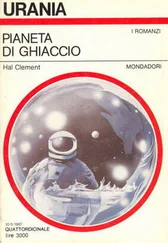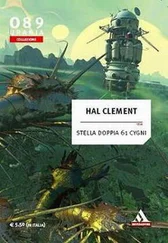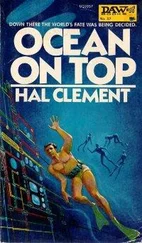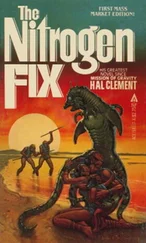“Just a moment,” interrupted Easy. “Hadn’t you better relay Don’s remark to Barlennan first?”
“Right.” Her husband gave a one-sentence summary of the captain’s speech, and went on, “I can’t force any policy on you, and would prefer not to even if I could. I don’t expect you to make a complete revelation of everything that’s gone on on Dhrawn since you first built the Settlement. In fact, I’d advise strongly against it; I have enough complications up here with the administration as it is. However, if Easy just happened to get an occasional talk with her old friends Destigmet and Kabremm, just as an example, I would have a better idea of what has gone on and be in a better position to keep things running smoothly at this end. I don’t expect a spot decision on any matter of major policy change, Commander, but please think it over.” Barlennan, being a sea captain by training and trade, was accustomed to the need for quick decisions. Furthermore, circumstances had already compelled thoughts on similar lines to circulate in his tiny head. Finally, his only really basic policy was to ensure his own survival and that of his crew. He answered Ib promptly. “Easy may get her talk with Destigmet, but not right away; the Esket is a long distance from here. I will also have to wait to tell you all that I’d like to, because I must first hear from you the details of the trouble you mentioned when you first called. You said that another of my cruisers was in trouble. “Please tell me just what has happened, so I can plan what help to request from you.” Ib and Easy Hoffman looked at each other and grinned in mingled relief and triumph. But it was Benj who made the key remark. This was later on, in the aerology lab, when they were recounting to him and McDevitt all that had been said. The boy looked up at the huge globes of Dhrawn, and the tiny area where the lights indicated partial knowledge. “I suppose you think he’s a lot safer now, down there.” It was a sobering thought.
Writing a science fiction story is fun, not work. If it were work I wouldn’t be writing this article, which would then constitute a chapter for a textbook. I don’t plan to write such a text, since if the subject is teachable I’d be creating competition and if it isn’t I’d be wasting time. The fun, and the material for this article, lies in treating the whole thing as a game. I’ve been playing the game since I was a child, so the rules must be quite simple. They are; for the reader of a science-fiction story, they consist of finding as many as possible of the author’s statements or implications which conflict with the facts as science currently understands them. For the author, the rule is to make as few such slips as he possibly can. Certain exceptions are made by both sides, of course. For example, it is commonly considered fair to ignore certain of Dr. Einstein’s theories, if the story background requires interstellar travel. Sometimes a passing reference is made to travel through a “hyperspace” in which light can travel faster or distances are shorter, but in essence we ignore the speed-of-light rule since we can — so far — see no way around it. The author assumes that problem, or perhaps others equally beyond our present ability to solve, to be answered, and goes ahead from there. In such a case, of course, fair play demands that all such matters be mentioned as early as possible in the story, so that the reader has a chance to let his imagination grow into the new background. I always feel cheated when the problem which has been developed in a story is solved by the discovery in the last chapter of antigravity, time travel, or a method of reviving the dead; such things must be at least near full development and known to the reader long enough in advance to give him a chance to foresee the ending. I have always assumed, perhaps wrongly, that others felt as I do; I try to write accordingly. In Mission of Gravity I’ve been playing this game as fairly as I could. The author has one disadvantage, of course; all his moves must be completed first. Once the story is in print, the other side can take all the time in the world to search out the mistakes; they can check with reference libraries or write letters to universities, if they play the game that seriously. Sooner or later the mistakes will come out; there is no further chance to correct them. If Mission of Gravity contains such errors, they’re out of my hands now. I did my best to avoid them, but you still have a good chance to win. As I said, my moves were fun, not work. The basic idea for the story came nearly ten years ago. In 1943 Dr. K. Aa. Strand published the results of some incredibly — to anyone but an astronomer — painstaking work on the orbit of the binary star 61 Cygni, a star otherwise moderately famous for being the first to have its parallax, and hence its distance, measured. In solving such a problem, the data normally consist of long series of measurements of the apparent direction and distance of one star from the other; if the stars are actually moving around each other, and the observations cover a sufficient fraction of a revolution, it is ordinarily possible if not easy to compute the actual relative orbit of the system — that is, the path of one assuming that the other is stationary. Dr. Strand’s work differed from the more usual exercises of this type in that his measures were made from photographs. This eliminated some of the difficulties usually encountered in visual observation, and supplied a number of others; but there was a net gain in overall accuracy, to the extent that he was not only able to publish a more accurate set of orbital elements than had previously been available, but to show that the orbital motion was not regular. The fainter star, it seemed, did not move around the brighter in a smooth ellipse at a rate predictable by the straightforward application of Kepler’s laws. It did, however, move in a Keplerian path about an invisible point which was in turn traveling in normal fashion about the other sun. There was nothing intrinsically surprising about this discovery; the implication was plain. One of the two stars — it was not possible to tell which, since measures had been made assuming the brighter to be stationary — was actually accompanied by another, invisible object; the invisible point which obeys the normal planetary and stellar laws was the center of gravity of the star-unknown object system. Such cases are by no means unusual. To learn which of the two suns is actually attended by this dark body, we would have to have more observations of the system, made in relation to one or more stars not actually part thereof. Some stars exist near enough to the line of sight for such observations to be made, but if they have been reduced and published the fact has not come to my attention. I chose to assume that the object actually circles the brighter star. That may cost me a point in the game when the facts come out, but I won’t be too disheartened if it does. There was still the question of just what this object was. In other such cases where an invisible object betrayed its presence by gravity or eclipse, as in the system of Algol, we had little difficulty in showing that the companion was a star of some more or less normal type — in the case of Algol, for example, the “dark” body causing the principal eclipse is a sun larger, hotter, and brighter than our own; we can tell its size, mass, luminosity, and temperature with very considerable precision and reliability. ORBIT of MESKLIN The positions of the isotherms and time of isotherm crossing are approximate and assume that the sun is 61 Cygni A
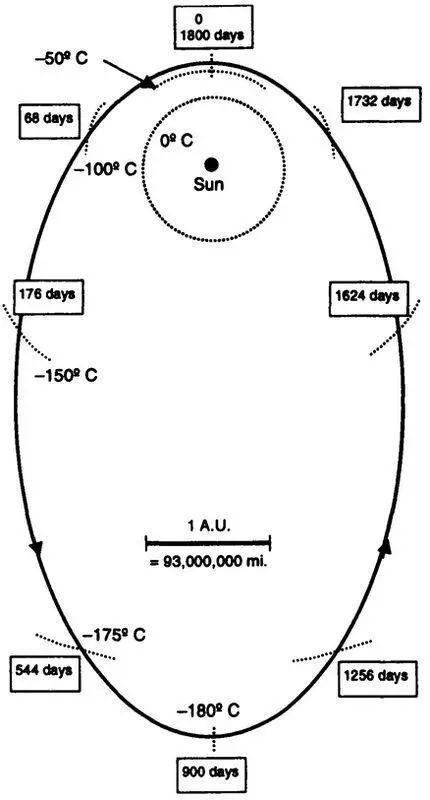
Читать дальше
